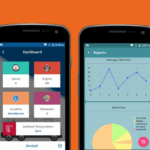The Industrial Internet of Things (IIoT) is getting a lot of attention from the industrial sector, particularly with Original Equipment Manufacturers. IIoT helps OEM in converting regular product into smart connected product with disruptive business models like product as a service. Which gives a competitive advantage in the market.
Sensors and edge devices are the backbone of every smart connected products. The suitable sensor for the OEM product makes the major difference in the end results. Following are the key elements to be considered in the sensor selection for effective smart connected product business outcomes.

1. Application: This is like an object-oriented method. Select the best sensor for the target object by correctly understanding the customer’s intended application. This required a higher attentive listening skill. Major items to understand the intended application are:
- Sensing object like size, material, shape, surface condition, etc.
- Detection purpose like presence/absence, position, color, etc.
- Detection performance like sensing range, senility, timer, etc.
- Environmental conditions like vibration, temperature, noise, etc.
- Installation restrictions like installation space, movable part, etc.
- Other conditions like load type, supply voltage, convenience etc.
2. Material type: The material composition of the target to be sensed is another element which influence the sensor selection. This study will help to select the sensor to sense different kind of materials such as a metallic or non-metallic type, solid or liquid type, magnetic or nonmagnetic type.
3. Geometry study: Fitting a right sensor at a right position gives the best results. Hence the space constraints provided in the product are deciding factor for selecting the size of the sensor.
4. Interface study: Selecting interface of the controller circuit is most important in deciding the sensor type, whether it should be Analog, Digital or Pulse type and even the range of the sensors are based on these aspect.
5. Sensor grade: Sensor grading is based on the application and the industry type the product is used. Like for food grade compliance, the sensor should be of that grade to prevent from affecting the quality of the food. Similarly other industries like chemical or fertilizer industries require different grade of sensors too.
6. Precautions for proper use: You may believe you have chosen a right sensor for your application based on the above 5 consideration but before finalizing double check the sensor catalog “precaution for proper use”. Where you will find the sensor manufacturers guidelines for propose use like setting range, interference, protection, wiring work, steam, dust, etc..
We at Maxbyte Technologies assist our customers and partners in selecting right IIoT sensors and edge devices efficient and effective approach for industrial OEM products and manufacturing digitization and analytics. Want to know more about our IIoT edge device products and consulting services? click here.




